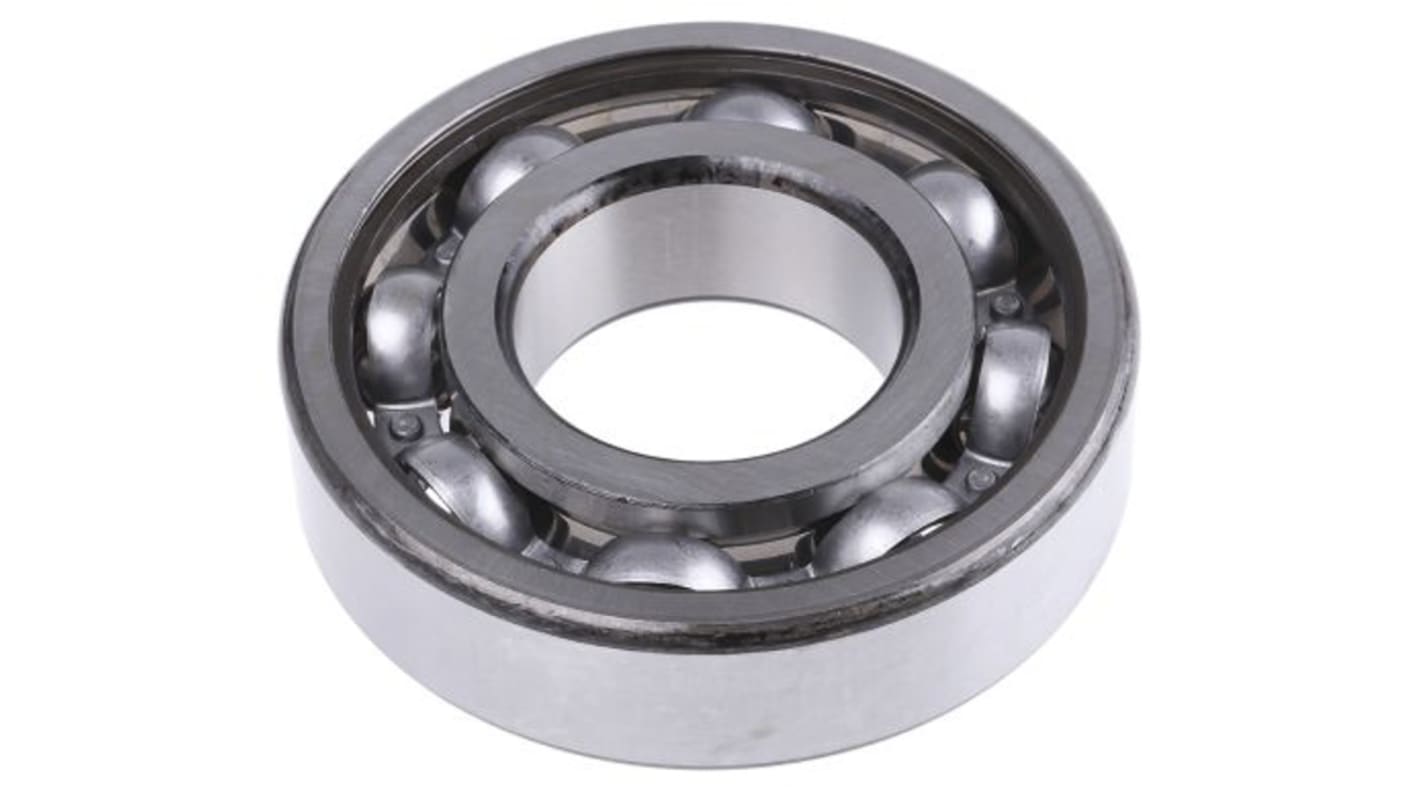SKF 607 Single Row Deep Groove Ball Bearing- Open Type 7mm I.D, 19mm O.D
- RS Stock No.:
- 286-7518
- Mfr. Part No.:
- 607
- Brand:
- SKF

Bulk discount available
Subtotal (1 unit)*
£3.23
(exc. VAT)
£3.88
(inc. VAT)
FREE delivery for orders over £50.00
In Stock
- 5 unit(s) ready to ship
- Plus 66 unit(s) ready to ship from another location
Need more? Click ‘Check delivery dates’ to find extra stock and lead times.
Units | Per unit |
|---|---|
| 1 - 4 | £3.23 |
| 5 - 9 | £3.10 |
| 10 - 24 | £3.04 |
| 25 + | £2.98 |
*price indicative
- RS Stock No.:
- 286-7518
- Mfr. Part No.:
- 607
- Brand:
- SKF
Specifications
Technical Reference
Legislation and Compliance
Product Details
Find similar products by selecting one or more attributes.
Select all | Attribute | Value |
|---|---|---|
| Brand | SKF | |
| Inside Diameter | 7mm | |
| Outside Diameter | 19mm | |
| Race Width | 6mm | |
| Ball Bearing Type | Single Row Deep Groove Ball Bearing | |
| Sealing Arrangement | Open Type | |
| Bearing Clearance | CN | |
| Material | Steel | |
| Ball Material | Steel | |
| Cage Material | Sheet Metal | |
| Number of Rows | 1 | |
| Static Load Rating | 950N | |
| Dynamic Load Rating | 2.34kN | |
| Bore Type | Parallel | |
| Bearing Series | 0 Extra Light | |
| Model Number p | 607 | |
| Partial Bearing Code | 607 | |
| Race Type | Plain | |
| Select all | ||
|---|---|---|
Brand SKF | ||
Inside Diameter 7mm | ||
Outside Diameter 19mm | ||
Race Width 6mm | ||
Ball Bearing Type Single Row Deep Groove Ball Bearing | ||
Sealing Arrangement Open Type | ||
Bearing Clearance CN | ||
Material Steel | ||
Ball Material Steel | ||
Cage Material Sheet Metal | ||
Number of Rows 1 | ||
Static Load Rating 950N | ||
Dynamic Load Rating 2.34kN | ||
Bore Type Parallel | ||
Bearing Series 0 Extra Light | ||
Model Number p 607 | ||
Partial Bearing Code 607 | ||
Race Type Plain | ||
RoHS Status: Exempt
- COO (Country of Origin):
- IT
SKF Ball Bearing, Deep-Groove Bearing Type, Chromium Steel, 7mm ID, 19mm OD - 607
When you want to achieve axial and radial movement with minimal friction, use this SKF deep-groove ball bearing. It's a cylindrical-bore type made from bearing steel. This type of high-carbon chromium offers wear resistance and fatigue strength so you can trust it's reliable and durable. A sheet metal cage and radial internal clearance rating of CN means this unit generates low friction between the balls and the outer ring, producing less heat. Because heat can cause problems with bearing assemblies by drying up lubricant, this helps to extend the life of the bearing and minimises the need for frequent maintenance.
Features & Benefits
• Integrates with SKF modular system of housings, seals and adapters for broad compatibility
• High max limiting speed of 85,000r/min indicates mechanical robustness
• Heat stabilised up to at least +120°C, so suitable for use in harsh settings
Applications
• Household appliances
• Factory automation
• Industrial motors
Should I choose a chrome steel or stainless steel bearing?
The choice between bearing steel and stainless steel depends on the environment you'll be using your bearing assembly in. Chrome steel’s robust qualities make it a practical choice for dry settings. Where moisture's present, stainless steel bearings (such as 893-0334) have the advantage of being corrosion-resistant.
Related links
- SNR 607 Single Row Deep Groove Ball Bearing- Open Type 7mm I.D, 19mm O.D
- NSK 607 Single Row Deep Groove Ball Bearing- Open Type 7mm I.D, 19mm O.D
- Igus BB-607-B180-30-GL Single Row Deep Groove Ball Bearing- Open Type 7mm I.D, 19mm O.D
- Igus BB-607-B180-30-ES Single Row Deep Groove Ball Bearing- Open Type 7mm I.D, 19mm O.D
- SKF 607-2RSH Single Row Deep Groove Ball Bearing- Both Sides Sealed 7mm I.D, 19mm O.D
- SKF 607-2RSH/C3 Single Row Deep Groove Ball Bearing- Both Sides Sealed 7mm I.D, 19mm O.D
- SKF 607-2RSL Single Row Deep Groove Ball Bearing- Both Sides Sealed 7mm I.D, 19mm O.D
- SKF 607-2Z Single Row Deep Groove Ball Bearing- Both Sides Shielded 7mm I.D, 19mm O.D


